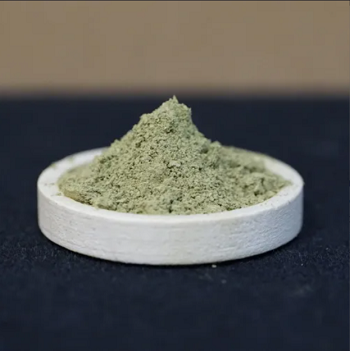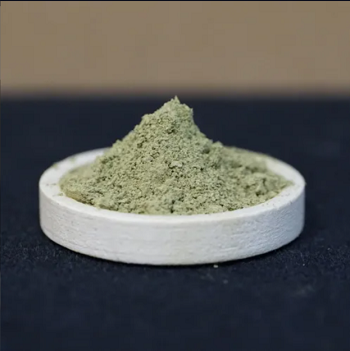Salvia Divinorum And Kratom are two herbal plants having a lengthy history of usage in conventional medicinal remedies. Both of these plants have a long history of offering a variety of advantages.
Salvia Divinorum sometimes referred to as “the sage of the diviners,” is a plant that is indigenous to the Mexican state of Oaxaca and belongs to the mint family.
On the other hand, Kratom is a tropical tree that is indigenous to Southeast Asia. Numerous alkaloids found in its leaves have been used for generations to treat a wide range of illnesses.
Recently, Kratom and Salvia Divinorum have become more well-liked as all-natural health and wellness botanicals in the United States. We will talk about the origins, applications, and queries related to both of these plants in this article.

Known History Of The Origin Of Salvia Divinorum And Kratom Up Until Now
Salvia Divinorum is a native plant to parts of Oaxaca, Mexico’s Sierra Mazateca área. This plant was one of the several that the Mazatec Indians used for ceremonial divination. Outside of this region, Salvia Divinorum plants can be successfully grown. They may be grown inside and outdoors, especially in humid semi-tropical regions.
Ketum, on the other hand, is an evergreen tree that originates from Southeast Asian jungles. The trees may sprout and grow swiftly in nutrient-rich rainforest soil, growing to a height of 20 feet in just two years. It is a part of the Rubiaceae family of coffee trees, and it has variegated veins in its leaves.
Physical And Chemical Composition Of Salvia Divinorum And Kratom
While the chemical makeup of these plants can vary greatly, the primary components are potent chemical compounds called alkaloids -mitragynine and 7-hydroxy mitragynine (7-OHM). Multiple terpenes and alkaloids are found in various amounts in Korth’s chemical makeup, making it a very complex substance.
These active agents combine to supra-spinal receptors known as kappa, mu, and delta-opioid receptors. This combination helps in the release of endorphins and dopamine that in-turn prompts the discharge of serotonin.
Salvia Divinorum, in contrast, only includes one active alkaloid, Salvinorin A -Trans-Neoclerodane Diterpene, which is responsible for the majority of its therapeutic benefits. This chemical binds with KOR -that is Kappa Opioid Receptors.
What Are The Short-Term Effects Of Salvia Divinorum And Kratom?
Salvia Divinorum can have some short-term side effects, such as a little feeling of excitement, a boost in energy, and a rise in sociability. Usually, the effects persist for many hours.
Kratom, on the other hand, is a plant that has a variety of health benefits. For instance, it could result in sensations of joy and exhilaration. Additionally, it might lift your spirits and give you more energy. Some people discover that Ketum helps them cope with their discomfort or stress. After consuming Mitragyna, the effects generally continue for about four hours.
What Are The Long-Term Effects Of Salvia Divinorum And Kratom?
Salvia Divinorum and Kratom have comparable long-term effects. Both are employed to alleviate distress. Salvia Divinorum is a herb that grows in Mexico, whereas Korth is a Southeast Asian tree.
Users of Salvia Divinorum and Kratom can encounter adverse effects. Additionally, long-term users of both also run the risk of becoming dependent on the substances and using large doses that can have harsh effects on the consumers.
Correct Dosage And Precautionary Methods While Consumption Generally Prescribed By Practitioners?
While Mitragyna has a reputation for being a safe medicine when used sparingly, it’s crucial to avoid taking too much at once. A daily intake of 1-5 grams of the herb is suggested.
Salvia Divinorum is stronger than Ketum, thus the suggested daily intake ranges from 1-4 grams.
Although Salvia Divinorum and Kratom have no known negative side effects, some users of these botanicals claim to have low self-esteem. Please stop taking these medications as soon as you develop any of the symptoms that make you feel uneasy or unwell, and visit a professional doctor to guide you according to your condition.
Are Salvia Divinorum And Kratom Legal?
Salvia Divinorum and Ketum are not completely known to be legal globally. Although legalised in most countries, both of these botanicals are prohibited in some nations.
Australia, Germany, Malaysia, and other nations throughout the world prohibit the possession or sale of kratom. It can be acquired without a prescription over the counter in certain nations, but it needs to come from places that are authorised to offer it.
Although Salvia Divinorum is still lawful in the majority of other countries throughout the world, it is presently outlawed in several regions of Europe and Asia, including Thailand.
Under the Controlled Substances Act, Salvia Divinorum is not regulated in the US. However, some of the states have ruled it as illegal according to their own state laws. These states include Tennessee, Delaware, Illinois, Virginia, Texas, Missouri, and Louisiana.
Similarly, Mitragyna is also legal in the US on a federal level. Though, some of the states like Alabamas, Indiana, Arkansas, Vermont, Wisconsin, Rhode Island, and etc have banned its usage, possession, and trade.
Are There Any Alternatives Available?
Salvia Divinorum and Kratom consumption has skyrocketed in popularity in recent years. There are several explanations for this, but it is mostly thanks to its various health benefits that come with no side effects when used in moderation.
CBD oil is an alternative. Cannabidiol (CBD), a substance found in this oil, has been shown to have numerous advantages when it comes to treating different kinds of pain.
Cannabis oil is another option. This particular oil contains delta-9-tetrahydrocannabinol (THC), which is well known for treating a variety of other symptoms linked to various health issues.

Conclusion
Both Salvia Divinorum and Kratom are incredibly powerful for assisting individuals with a variety of health conditions, as can be shown after a detailed analysis of both plants. They can benefit those who experience discomfort associated with many conditions as well as those with other health issues like stress and fatigue.
Although Mitragyna and Salvia Divinorum are completely legal to use in the US, they have been banned in several states and nations according to their own legislation. If you reside in one of these states or nations, you will not be able to consume this plant safely.
How much Kratom should one take?
A daily intake of 1-4 grams of Kratom is suggested to avoid complications. It is best to start with the lowest dose possible and then gradually increase to a suitable dose that has all the desired effects on your body.
Is Salvia Divinorum illegal in the US?
No, Salvia Divinorum is not prohibited at this time. The Controlled Substances Act does not include Salvia Divinorum on its substance list. The Substance Enforcement Administration is keeping an eye on reports of Salvia Divinorum misuse across the country and does consider it to be a drug of concern.
Can Salvia Divinorum and Kratom be mixed?
Salvia and Ketum interact weakly in the short term, meaning it is mostly safe to use them simultaneously.


Latest from our blog
Please Read….This is Urgent
In loving memory of Ryan, a special individual who recently passed away, we honor his [...]
Damiana Exposed: Special Look At Turnera diffusa (2023)
Damiana Exposed: Special Look At Turnera diffusa (2023) Damiana is a wild shrub native to [...]
Kanna: A New Look At An Exciting Mood Booster (2023)
What is kanna? Some say the botanical has similar effects to MDMA, or ecstasy. Others [...]
Blue Lotus Flower: Unveiling Its Mystical & Therapeutic Powers
To cut to the chase and pickup potent 25x blue lotus extract today while enjoying [...]
Red Bubble Kratom Extraction: A Comprehensive Guide
As a kratom enthusiast, have you ever wondered if there was a method for getting [...]
Aug
Maeng Da Kratom 101: Accurate Info You Can Trust
Maeng Da kratom may be the most popular kratom strain on the market today. The [...]
Aug